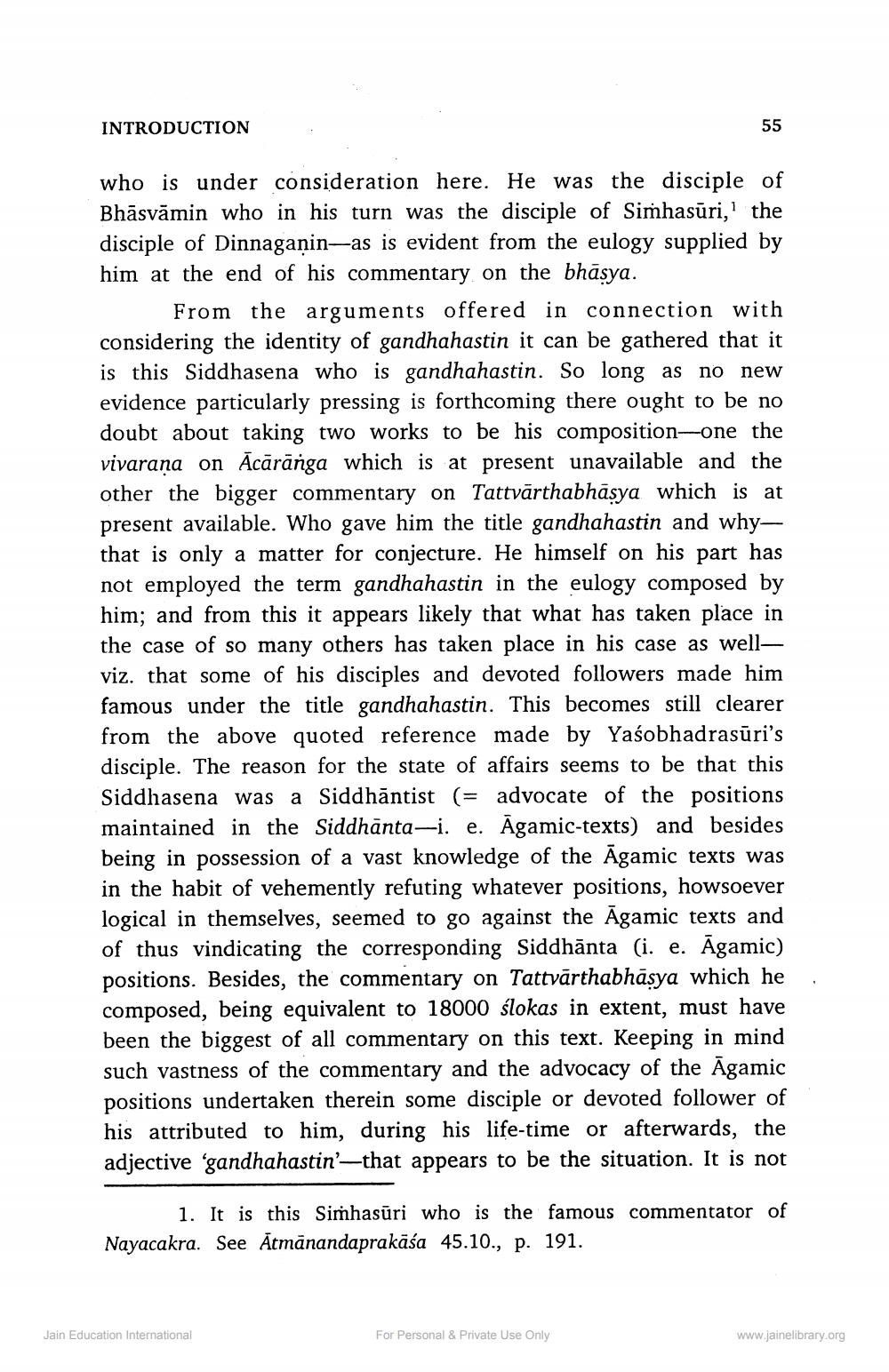________________
INTRODUCTION
55
who is under consideration here. He was the disciple of Bhāsvāmin who in his turn was the disciple of Simhasūri,' the disciple of Dinnaganin-as is evident from the eulogy supplied by him at the end of his commentary on the bhāsya.
From the arguments offered in connection with considering the identity of gandhahastin it can be gathered that it is this Siddhasena who is gandhahastin. So long as no new evidence particularly pressing is forthcoming there ought to be no doubt about taking two works to be his composition-one the vivarana on Ācārānga which is at present unavailable and the other the bigger commentary on Tattvārthabhāsya which is at present available. Who gave him the title gandhahastin and whythat is only a matter for conjecture. He himself on his part has not employed the term gandhahastin in the eulogy composed by him; and from this it appears likely that what has taken place in the case of so many others has taken place in his case as wellviz. that some of his disciples and devoted followers made him famous under the title gandhahastin. This becomes still clearer from the above quoted reference made by Yaśobhadrasūri's disciple. The reason for the state of affairs seems to be that this Siddhasena was a Siddhāntist (= advocate of the positions maintained in the Siddhānta-i. e. Agamic-texts) and besides being in possession of a vast knowledge of the Agamic texts was in the habit of vehemently refuting whatever positions, howsoever logical in themselves, seemed to go against the Āgamic texts and of thus vindicating the corresponding Siddhānta (i. e. Āgamic) positions. Besides, the commentary on Tattvārthabhāsya which he composed, being equivalent to 18000 ślokas in extent, must have been the biggest of all commentary on this text. Keeping in mind such vastness of the commentary and the advocacy of the Āgamic positions undertaken therein some disciple or devoted follower of his attributed to him, during his life-time or afterwards, the adjective ‘gandhahastin'—that appears to be the situation. It is not
1. It is this Simhasūri who is the famous commentator of Nayacakra. See Atmānandaprakāśa 45.10., p. 191.
Jain Education International
For Personal & Private Use Only
www.jainelibrary.org




